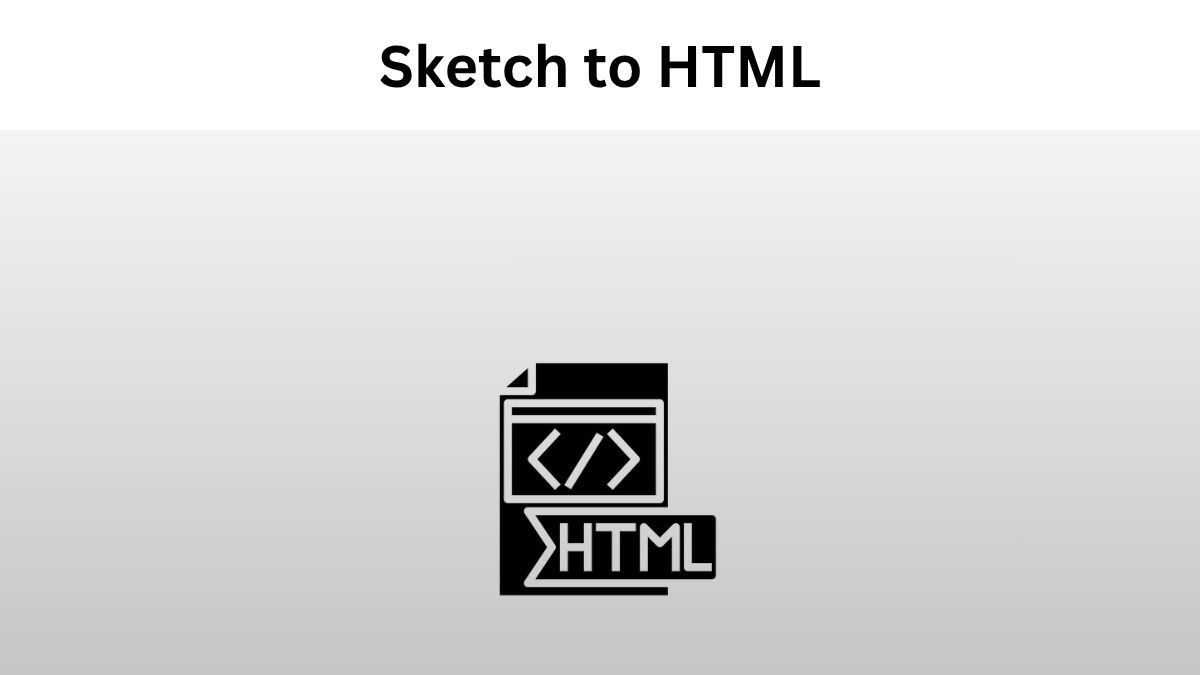In this age of digitalization, responsive websites are essential for businesses, as customers primarily surf the Internet on mobile and Desktop devices. Adapting to a creative, user-friendly website is a must now, and designing a well-designed, creative website helps you achieve a top position online and attract customers who may be interested in your products or services.
One such upliftment in the field of design that is highly in demand is Sketch-to-HTML. This technique has helped build websites that load faster and are compatible with a wide range of devices. Adopting such design practices will help achieve a prominent position on the web.
Here, the necessary steps and procedure for converting Sketch to HTML are presented. To increase productivity and user-friendliness, Sketch makes it easier to write plugins. Also, it has a vast number of symbols that can be used to design UI elements.
Basic Introduction to Sketch
Sketch is a powerful primary tool for graphic editing used by programmers, developed by a Dutch company that also won the Apple Design Award. Sketch is gaining maximum popularity due to its flexibility and simplicity of use. It is also widely used for creating mobile websites, as designing for Android or iOS is very convenient for sketching.
Also Read: The Evolution of Web Development to Web3
A Prerequisite to Convert Sketch to HTML
To design web pages correctly, any web development company must understand key points that help convert a sketch into HTML. These would help decrease the risk of viewers facing issues. Hence, it is necessary to get the plan ready before we convert from sketch to HTML.
- It is preferred that the website be displayed at the highest resolution. It also allows resizing objects, and it never pixelates because it is a vector-based graphic.
- Sketch lets you create multiple artworks and work on them simultaneously.
- To get the proper reach of the audience, it is necessary to write SEO-friendly code.
- It is a lighter version in terms of size, eliminating the concern about file size.
- Sketch-to-HTML conversion is the best choice because it is easy to use, supports a faster workflow, and delivers better design results.
- The loading speed must be as fast as possible, as end users won’t wait long. And so, going with the flow, you will never let your site fail due to such reasons.
Strategies to Follow While Converting Sketch to HTML
There are multiple strategies to consider when converting Sketch to HTML. Hence, it is necessary to understand the Strategies wisely. It is entirely about converting Sketch Artboards and layers into files in CSS, HTML, Font Files, and so on. After that, the packages are generated and speed optimization is performed, improving the website’s loading time.
Step 1: Export the Code
This is a simple process. Click “Export the Code” in Plugins > Launchpads by Anima.
Step 2: Code Package
It is a ZIP file containing HTML, CSS, images, and fonts. Select the File format (SVG or PNG) you want to export the layers to, and then select the location where it should be saved.
Also Read: GenYouTube – YouTube Video Downloader
Fundamental Aspects of the Sketch to HTML Conversion
- Cross-Browser Compatibility: It is compulsory to design a website that works smoothly and functions uninterruptedly across all devices. There are many Search Engines to surf, each considering multiple aspects. With the increase in the number of browsers and their versions, it has become very easy to test a website across them. Test it on all the web browsers for cross-browser compatibility.
- SEO-Friendly: The ultimate objective of designing a Responsive Website is to increase popularity and enhance the brand’s visibility. This is only achievable when the proper skills are used to make the website search engine-friendly. If you are looking for PSD to HTML5 conversion services, you must have full knowledge of how search engines will behave with different web pages. Hence, this will affect your webpage’s ranking.
- Optimum Page Speed: Websites at the top catch visitors’ eyes. Page Loading Speed is a crucial factor in determining whether a website is user-friendly. Various factors affect page load speed, such as large images and multiple HTTP requests. The more there are, the longer it takes to load the page.
- Flexible and Responsive Design: Sketch-to-responsive website allows users to have a mobile website that looks great and is easy to use. Also, using such a website will give you a competitive edge with Search Engines, and you can expect high-value sales.
Advantages of Sketch to HTML
Sketch has a wonderful feature that lets designers roughly align everything along the edge, which gives the best view of the website. The web development process speeds up with the easy export of interactive design features, and it can export objects to create friendly visuals. Sketch includes a vector tool that lets you rescale objects without compromising quality.
It is easier to draw a wide range of artboards and get a glance at how the website would work after finishing the design work.
- Importance of Quality Testing After Conversion
- All the pages must be linked to the main page.
- The logo must be placed correctly in HTML Design.
- The text must be formatted precisely.
- The themes of the web pages must be consistent.
- The headings must include H1, H2, and H3 headings.
- Cross-browser compatibility must be tested.
Also Read: The Importance of Web Development
Final Words
The increasing demand for this conversion has attracted all developers to use this process. Sketch-to-HTML conversion is a complex process that requires careful attention to detail to achieve the best results. There are lots of factors one needs to know. For that, one must have all the basic details of sketch, a basic checklist, strategies to follow, fundamental aspects, advantages of sketch to HTML, and the importance of quality testing.

